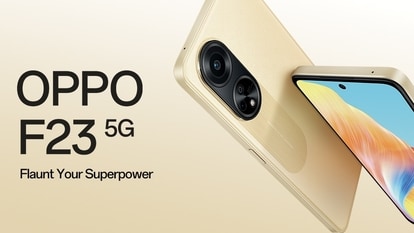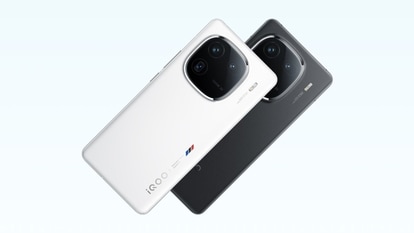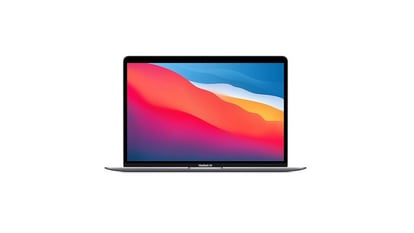Review: Lava XOLO X900
The Lava XOLO X900 is Intel’s first foray into the world of smartphones. Although the Chipzilla has been working on a mobile chipset for quite a while now, it never quite made it to the production stage, until now.
The Lava XOLO X900 is Intel's first foray into the world of smartphones. Although the Chipzilla has been working on a mobile chipset for quite a while now, it never quite made it to the production stage, until now.
With Lava as its partner, Intel has released the first smartphone based on its Medfield platform in India, which also happens to be the first market in the world to get a phone with Intel Inside. With this phone Intel is also bringing its x86 architecture to the world of smartphones for the first time, which has been further optimized for power efficiency by Intel.
Design
The XOLO X900 has a very simple and uninspiring design. It's mostly a long, black slab with a silver finish on the side. The front portion has a glass that stretches from top to bottom and covers the earpiece, front camera and sensors at the top, the display in the middle and the four control keys at the bottom.


On the right side of the phone are the volume control keys,micro SIM card tray, camera shutter key and the right stereo speaker.




On the top are the 3.5mm headphone jack and the power/lock key.
On the bottom is the microUSB port.
On the back is the 8 megapixel camera with an LED flash and a secondary microphone.




The XOLO X900 is fairly thin and light and has a nice soft touch plastic on the back. Unfortunately, the build quality on our review unit was not up to the mark and the cover on the back especially had a tendency to creak slightly when the device was held.
We are also not big fans of the way the stereo loudspeakers are placed. They are indeed stereo speakers and we could hear distinct left and right channel audio coming out from respective speakers but they are arranged in a way that you will only notice the effect in portrait mode whereas all the videos and games where you would want to experience this effect are in landscape.
Display
The XOLO X900 has a 4.03-inch, 1024 x 600 resolution touchscreen LCD. Image quality on this display is a bit of a mixed bag. The colors and contrast levels are muted, the viewing angles are poor and there is noticeable ghosting seen around fast moving objects, especially in games. The only good thing about this display is the resolution, which coupled with the relatively small four inch size gives it a pixel density of an impressive 295PPI.
Now there is an advantage and disadvantage of this high pixel density on the XOLO X900. The advantage is that the picture looks very sharp, which almost makes up for the lack of outright image quality of the panel. The disadvantage is that the OS has not been optimized for this pixel density, which makes things such as icons and fonts look a bit small.
Hardware and software
The XOLO X900 runs on Intel's new Medfield platform for smartphones. The SoC in question is the Intel Atom Z2460, which is also known as Penwell. Within this SoC are Intel's single-core 1.6GHz Saltwell CPU with Hyper-threading support and a PowerVR SGX 540 GPU. As you can expect, Intel has stuck with its x86 architecture, which makes this the first production Android device to be based on this architecture. It does, however, come with some limitations, which we will talk about later. Then there's 1GB of RAM and 16GB of storage space, with a separate 2GB for apps. Unfortunately, there is no memory card slot.
On the software side, the XOLO X900 is running Android 2.3.7 Gingerbread right now with Android 4.0 Ice Cream Sandwich promised for later. We know it sounds like a bummer and it is but the saving grace here is that it is practically a stock version of Gingerbread, so you won't have to deal with some silly skin on top of an outdated version of the OS. The only customizations here is the presence of the power widget within the notification drawer, which lets you quickly toggle things such as the Wi-Fi, Bluetooth, GPS, etc., a XOLO Care app, built-in doubleTwist music player, a new camera app and some new wallpapers. Other than this the OS is about as stock as it gets and we hope things stay this way when the Android 4.0 update arrives later.


Now as we mentioned before, the XOLO X900 runs on Intel's x86 architecture, unlike the ARM architecture we see on every other phone. Now the thing is, Android itself runs fine on x86 but that's not the case with all the applications. The apps on the Play Store are either built on top of the Dalvik VM or are of the NDK (Native Development Kit) variety. It's the former that run fine on Intel's architecture whereas the latter will require a bit of recompiling to become compatible with x86 processors. Fortunately, most of the applications on the Play Store are of the former variety, so the compatibility issue is not a big deal as of now. However, quite a few apps won't work until the developers make changes to them and that may not happen until the Intel devices gain some momentum in the market.
Among the apps we tried, it was mostly the games that refused to install on the XOLO X900. Apps that are incompatible won't show up in the Play Store app if you search for them and if you do manage to find them you won't be able to install them. However, there was also a small set of applications that showed up as compatible and installed just fine but when they were launched, they either crashed or displayed some kind of graphical anomalies. Again, this can all be fixed in one update but the developers will have to care enough about these devices (of which there are just two in the world right now, the XOLO X900 and the Orange San Diego) to make it happen.
Performance
On paper, the Intel Atom processor might not seem much, what with just a single core on board but in practice it works very well. We found the performance of the XOLO X900 to be satisfactory, and this despite of the fact that it was running Gingerbread, which tends todrag things down. If it was running Ice Cream Sandwich, the performance of this phone could have easily matched the best of the business.
And it's not just subjective impressions, either. We ran some benchmarks and got some very favorable scores that were on par with most dual-core phones, and at times even the quad-core ones, such as the HTC One X.
The only area where the performance falters a bit is in the graphics department. The PowerVR SGX540 might have been impressive two years ago but now it feels thoroughly outdated. Don't get us wrong, it would get you through most of the games on the Play Store (at least the ones that work), mostly because the display resolution is not that high. But it's not as future proof as the GPUs in some of the other SoCs out there and fails to impress as much as the CPU.
Performance in other areas was also decent. The phone exhibited good call quality and network reception. The GPS performance on our test unit was quite bad, however, with the phone simply refusing to connect to satellites for a long time, even though phones placed next to it managed just fine. This could, however, be an issue with just our device and no way would a retail unit be this bad. We were also not quite satisfied with the stereo speakers, which along with their awkward positioning just weren't loud enough.
As mentioned before, the XOLO X900 has 16GB of internal memory. We got some erratic transfer speeds with the phone. On occasions we got highly impressive 16 MB/s write speeds and at times we couldn't get more than 6. We couldn't quite figure out what the reason for this could be.
Multimedia
The XOLO X900 has an 8 megapixel camera with auto-focus and LED flash that can also do 1080p video recording at 30fps. The camera app on this phone is a bit different than the stock Gingerbread camera apps and is one of the few custom apps on the phone. It doesn't look very good and comes nowhere close to matching the camera applications on other Android phones from HTC or Samsung but it does pack in quite a lot of features in a small amount of space.










The 1080p video quality was also quite impressive but the problem with selecting this resolution is that your field of view drops drastically from 720p. So unless the subject is at a distance and can be accommodated entirely in the viewfinder, it's best to stick to 720p mode.
We tried the HDMI out from the phone and it worked well. It mirror's the phone display on your TV and if you start playing a video on the phone it blanks out the video on the phone and only plays it on the TV screen. Watching 1080p videos from the phone on the TV was quite fun, as long as the video file was supported.
Battery Life
The Lava XOLO X900 has a 1,460mAh battery. Considering that the battery is attached and non-user replaceable, the battery life on this phone needs to be good because you can't just keep a spare battery and pop one in whenever the main one runs out. Fortunately, the XOLO X900 manages to go through a day with normal usage without any issues. Crank up your usage, however, and the battery buckles under the extra load. With lots of gaming and web browsing, we managed to get around six hours of battery life. Not bad but not great either. In terms of video playback, we got five and a half hours of battery life while playing a 720p video on a loop.


These battery life figures prove that the x86 is efficient enough to be used in smartphones, that too without having to rely on extra-large batteries.
Verdict
Intel's first foray into the smartphone segment has been quite impressive. The new Atom processor, despite being placed in a mid-range device manages to perform very well and at times snaps at the heels of some of the more expensive handsets. It's also quite efficient, with the battery life performance being on par with ARM based processors. There are some teething issuesin the form of incompatibility with a small segment of Android apps but we are hopeful that this will get sorted with time.
The biggest advantage the XOLO X900 has is its price. Although the phone was originally priced at ₹ 22,000 the price has since fallen down to ₹ 17,990. At that price, coupled with the speedy processor, the XOLO X900 is excellent value for money. The hardware isn't very exciting and the software is outdated (although an update has been promised in the future) but at this price you will be hard pressed to find a better deal as the performance of the Intel Atom processor is leagues ahead of the phones you normally find in this price range.
If you can overlook some of its shortcomings, the Lava XOLO X900 is a great option for those looking for a mid-range Android smartphone.




Catch all the Latest Tech News, Mobile News, Laptop News, Gaming news, Wearables News , How To News, also keep up with us on Whatsapp channel,Twitter, Facebook, Google News, and Instagram. For our latest videos, subscribe to our YouTube channel.

























